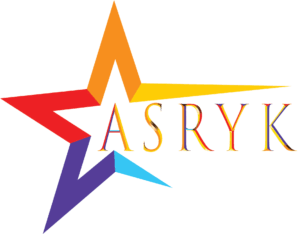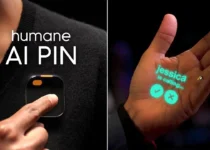The Dawn of a New Age: A Deep Dive into Generative AI (Gen AI)
Generative AI (Gen AI) represents a revolutionary leap in the field of artificial intelligence. Unlike traditional AI focused on analyzing and interpreting data, Gen AI takes it a step further – it learns to create entirely new content. This article delves into the fascinating world of Gen AI, exploring its inner workings, applications, ethical considerations, and potential impact on the future.
Unveiling the Engine: How Generative AI (Gen AI) Works
Gen AI leverages a class of deep learning algorithms called Generative Adversarial Networks (GANs). Imagine two neural networks locked in a constant game of one-upmanship. One network, the generator, attempts to create realistic data (text, images, audio, etc.), while the other network, the discriminator, tries to distinguish the generated data from real samples. Through this iterative process, the generator refines its creations to fool the discriminator, ultimately producing high-quality, authentic-looking content.
There are several variations of GANs, each with its strengths and weaknesses. Variational Autoencoders (VAEs) excel at understanding the underlying structure of data, while StyleGANs have a knack for generating incredibly realistic images. Each approach contributes to the ever-evolving capabilities of Gen AI.
A Kaleidoscope of Applications: Unleashing the Potential of Generative AI (Gen AI)
Gen AI is not just a futuristic concept; it’s already making waves in various domains. Here’s a glimpse into its diverse applications:
- Creative Industries: Imagine generating high-resolution images for stock photos or composing music tailored to specific moods. Generative AI (Gen AI) empowers artists, designers, and musicians by providing tools to explore new creative avenues.
- Drug Discovery: By simulating molecular interactions, Gen AI can accelerate drug discovery by identifying potential drug candidates with desired properties.
- Material Science: Designing innovative materials with specific functionalities becomes possible with Gen AI’s ability to model and predict material behavior.
- Education: Imagine personalized learning experiences with AI-generated content tailor-made to individual student needs. Gen AI offers exciting possibilities for enhancing the learning landscape.
- Gaming: AI-created game environments with unparalleled levels of detail and complexity can immerse players in whole new worlds.
This list barely scratches the surface of Gen AI’s potential. As the technology continues to evolve, we can expect even more groundbreaking applications to emerge.
Ethical Considerations: Navigating the Moral Maze
The power of Generative AI (Gen AI) comes hand-in-hand with significant ethical considerations. Here are some key concerns to ponder:
- Deepfakes: Malicious actors could use Generative AI (Gen AI) to create convincing deepfakes – manipulated videos or audio recordings – to spread misinformation or damage reputations.
- Bias and Fairness: As Generative AI (Gen AI) learns from existing data, it can perpetuate biases present in that data. Mitigating bias in AI development remains a crucial challenge.
- Job Displacement: Increased automation driven by Generative AI (Gen AI) could lead to job displacement in certain sectors. Addressing the social and economic consequences of this shift is critical.
- The Ownership of Creativity: Who owns the copyright of content generated by AI? This question raises complex legal issues about intellectual property rights in the age of Gen AI.
By proactively addressing these concerns, we can ensure that Generative AI (Gen AI) development aligns with ethical principles and contributes to a positive future.
Deep Dive: Exploring Specific GAN Architectures and Applications
As promised, let’s delve deeper into the fascinating world of Generative Adversarial Networks (GANs). We already explored the general concept of a generator pitted against a discriminator in an iterative learning process. Now, let’s explore some specific GAN architectures that have pushed the boundaries of Generative AI (Gen AI):
1. Variational Autoencoders (VAEs):
VAEs are a type of GAN with a unique twist. They focus on capturing the underlying structure of data, represented as a latent space. Imagine a complex dataset like handwritten digits. A VAE would learn to compress each digit into a point in a lower-dimensional latent space. This latent space would capture the essential characteristics of a digit (e.g., straight lines, curves) allowing for easier manipulation and generation of new, realistic digits.
Applications:
- Image compression: VAEs offer efficient lossless compression for images by focusing on the latent representation.
- Anomaly detection: By identifying data points that fall outside the learned latent space, VAEs can detect anomalies in datasets.
- Data augmentation: VAEs can be used to generate realistic variations of existing data, which can be helpful for training other models.

2. Deep Convolutional GANs (DCGANs):
DCGANs are specifically designed for generating high-resolution images. They leverage convolutional neural networks (CNNs) in both the generator and discriminator. CNNs are particularly adept at capturing spatial information in images, making them ideal for this task.
Applications:
- Image editing and manipulation: DCGANs can be used for tasks like image inpainting (filling in missing parts of an image) or style transfer (applying the artistic style of one image to another).
- Generating realistic product images: DCGANs can be used to create high-quality product images for e-commerce platforms.
- Creating facial expressions for animation: DCGANs can be used to generate realistic facial expressions for animated characters.
3. StyleGANs:
StyleGANs represent a significant leap forward in generating photorealistic images. These models can not only create realistic images but also manipulate specific aspects like pose, expression, and even lighting conditions. StyleGANs achieve this by disentangling the latent space into separate dimensions and controlling various visual attributes.
Applications:
- Generating high-quality stock photos: StyleGANs can create photorealistic images for a variety of purposes, reducing the need for expensive photography sessions.
- Creating realistic avatars: StyleGANs can be used to generate personalized avatars for virtual environments.
- Augmenting existing datasets: StyleGANs can be used to generate variations of existing data, enriching datasets for training other models.
4. Generative Adversarial Networks with Text to Image Synthesis (GAN-TTS):
This specific type of GAN bridges the gap between text and images. It takes a text description as input and generates a corresponding image. GAN-TTS models involve complex architectures that understand the semantic relationships between words and visual concepts.
Applications:
- Automatic image generation from captions: Imagine describing a scene with text, and a GAN-TTS model generates a corresponding image.
- Creating illustrations for children’s books: GAN-TTS models can automate the illustration process based on text descriptions.
- Augmenting text-based content with relevant images: News articles or blog posts can be automatically enriched with images generated from the text content itself.
This is just a glimpse into the diverse world of GAN architectures. Researchers are constantly innovating and developing new variations with specialized capabilities.
Case Studies: Unveiling the Power of Generative AI (Gen AI) in Action
To truly understand the impact of Generative AI (Gen AI), let’s explore some real-world case studies across different industries:
1. Healthcare:
- Drug Discovery: Generative AI (Gen AI), specifically VAEs, are being used by companies like Merck to analyze vast datasets of molecules and identify potential candidates for drug development. This significantly accelerates the discovery process and reduces costs.
- Personalized Medicine: Generative AI (Gen AI) can be used to analyze medical images like X-rays and MRIs to identify potential abnormalities, leading to earlier diagnoses and personalized treatment plans.
2. Media and Entertainment:
- Generating Movie Trailers: Companies like Nvidia are utilizing StyleGANs to generate realistic video snippets that can be used to create trailers or even deepfake actors for specific scenes.
- Personalized Music Composition: AI can analyze your listening habits and preferences to generate music tailored to your taste. This opens doors for entirely new avenues in music creation.
3. Retail and E-commerce:
- Virtual Try-On Technology: Imagine trying on clothes virtually using AI-generated images superimposed on your body. Companies like Amazon are exploring this concept to enhance the online shopping experience.
The Future Beckons: A World Shaped by Generative AI
The future with Generative AI (Gen AI) holds immense promise. Imagine a world where AI generates personalized healthcare plans, crafts educational materials that cater to individual learning styles, and even assists us in writing stories with unique plotlines. These possibilities are not mere science fiction. Generative AI (Gen AI) has the potential to revolutionize every facet of our lives. However, its development requires careful consideration of ethical implications and responsible implementation.
Here are some key trends to watch in the future of Generative AI (Gen AI):
- Improved Explainability: As AI models become more complex, understanding their decision-making processes becomes increasingly vital. Efforts are underway to develop more transparent and explainable AI systems.
- Human-AI Collaboration: The future likely lies in human-AI collaboration, where AI enhances human creativity and problem-solving abilities.
- Democratization of AI Tools: As Generative AI (Gen AI) tools become more accessible and user-friendly, their benefits will extend beyond large corporations and research institutions.
- New Regulations: Governments are likely to implement regulations to safeguard against potential misuse of Generative AI (Gen AI).
By embracing the opportunities Generative AI (Gen AI) presents while actively addressing the ethical challenges, we can guide this powerful technology towards a future that benefits all of humanity.



